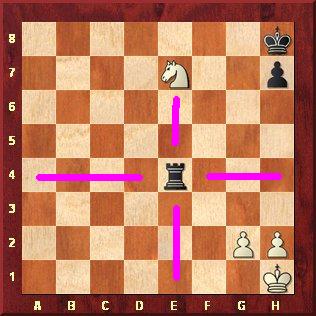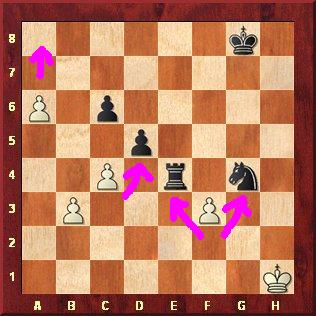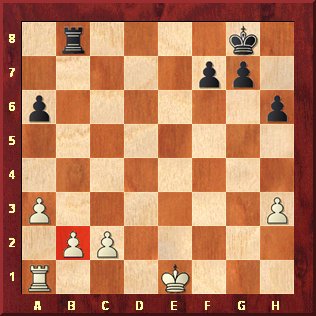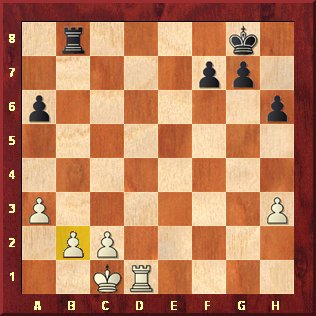It is important in chess to handle chess pieces effectively. Each piece has a different potential.
This is just a general short description about the Chess Pieces to start with. We go into more detail later.
 |
 |
| Among all Chess Pieces the king is the slowest, because he can only move one square at the time. He controls all squares around himself. If you put pieces on a (marked) square the king can take it away unless your piece is protected by another piece. | The queen is the strongest piece. Look at all the power she has. She controls all marked squares and attacks the king. The enemy king is in check now and must move away. |
 |
 |
| The rook could win the knight on e7. It is not protected and he can take it. But, of course, to give checkmate is a much stronger move as the game would be finished. So go down to e1 with the rook and it is checkmate. | The bishop moves only along the diagonals on its color. It can’t jump over other chess pieces and pawns. Here the bishop gives a check to the white king but he can go away, so it is not checkmate. |
 |
 |
| The knight controls the marked squares. The white king is in reach and attacked. That’s why he must move somewhere else. | The knight attacks many chess pieces: It attacks the queen, the knight, the pawn and the rook here. The knight is very well placed in the center of the chess board. What do we learn from that? Do place knights in the center and not in the corner of the chess board. knights are the only chess pieces which can jump! |
 |
 |
| This is a bit complicated, but don’t worry, we take this positon apart like a piece of cake. Start on the right side. What do we see? White can take away the knight with the pawn. He wins a knight that is good, isn’t it? But we can take his rook too. That is even better. He has more value than a knight. And let’s look on the left side. We see a p a s s e d pawn. That one is free to run, not blocked by an enemy pawn. Best move would be to take the valuable rook and run with the pawn later to make a queen at the eight rank. | Nearly all pawns are blocked, except the p a s s e d pawn on the a-file.(like in the other diagramm) Nothing will stop this one from advancing. They love it to go forward to the eight rank (row), transforming into a queen. Look at this one on the a-File. Hey, he is going to make a queen when he reaches the rank (row) number 8, yeah. A sure winning position for white. |
 |
 |
| Here I explain the en passant rule. White moves f4 ( the pawn to f4 ) As you can see, you start from the original square (second row) to go forward. | Note: When a pawn has not moved yet, you can move TWO squares ahead from the original position if you like. If you do that and pass another enemy pawn, then your opponent can exchange it off, just the same way, as if you would have moved just ONE step ahead. |

You see here the position after black has exchanged En Passant and white has recaptured!
Castling
 |
 |
| Now look at this diagramm. You can’t castle here. Why not? Because the almighty bishop (in this position) controls the single square between the king and the rook. Castling is only allowed, if both squares between them are not attacked. | Look at the next diagramm. Your pawn is attacked by the Rook. Do you see that? No worries! Just castle long! |

Castling long
1. Move the king TWO squares to the left.(like with short castling, just the other side)
2. Put the rook beside him.
yep, that’s it. More about castling in chess…
Chess pieces interact like members of a family.
Back to Rules in Chess
 Sick of Losing at Chess? Get Chess Courses from a Grandmaster directly! HUGE Discount! Click here!
Sick of Losing at Chess? Get Chess Courses from a Grandmaster directly! HUGE Discount! Click here!Get Chess Course -Beginners Package- from a Grandmaster! Huge Discount!